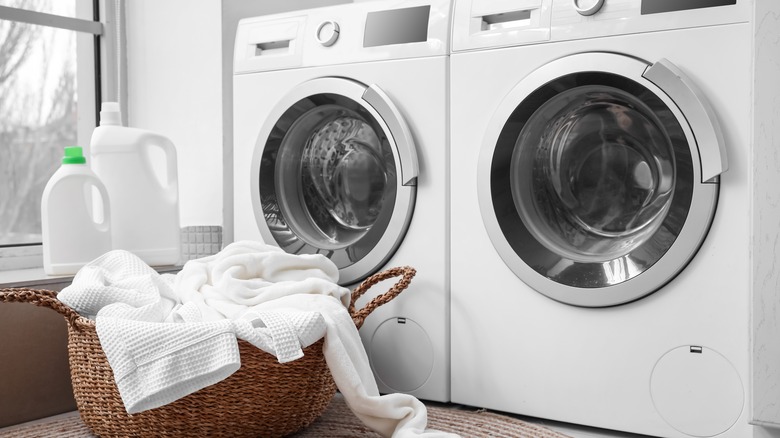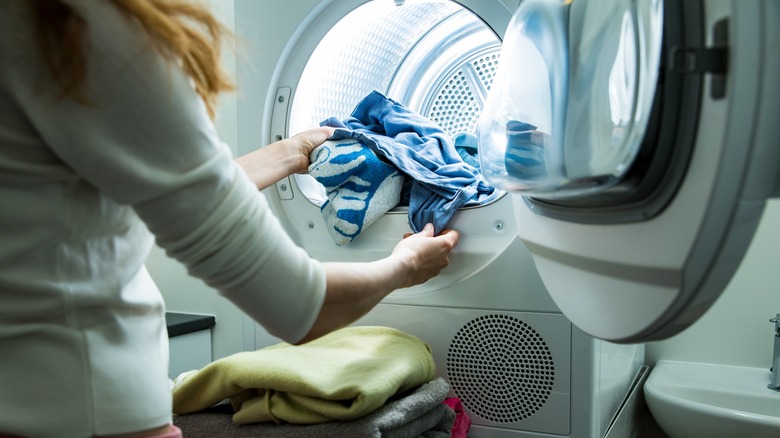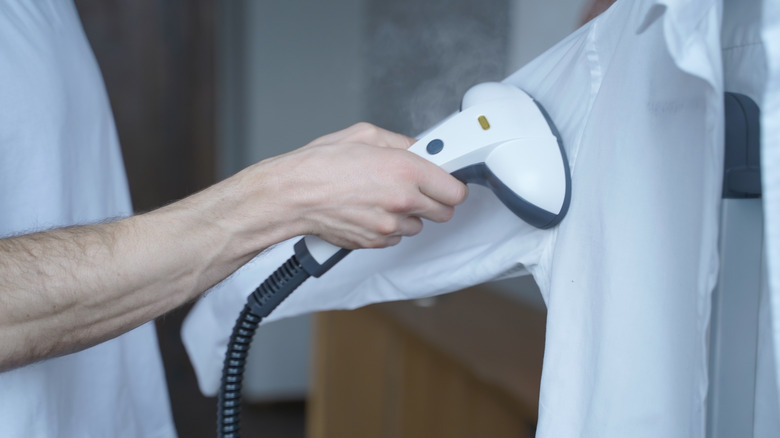Washer Or Dryer: Which Machine Actually Disinfects Your Laundry?
Washing machines are must-have appliances for many people, but we often give them more credit than they deserve. Yes, washers clean our clothes, but when it comes to getting rid of germs, fecal matter, or other bacteria, they may not be cleaning the way we hope. Washers are a breeding ground for bacteria, especially when dirty laundry is stored inside, and can actually aid in spreading unwanted bacteria more than cleaning it. When it comes to disinfecting, dryers kill germs that the washer can't handle, which makes them the true winner.
Kelly Reynolds, a germ researcher and associate professor of environmental health at the University of Arizona, told Time that most microorganisms can survive an average wash cycle. She recommended always putting clothes in the dryer on high heat to kill any viruses that may be floating around your home. But you don't always need to incorporate high heat during a wash cycle — here's what to know about properly disinfecting.
Why the dryer wins in the disinfecting game
When it comes to disinfecting, heat is the biggest factor. While many washers can get hot and aid in getting rid of some bacteria, the washer is not strong enough on its own to get rid of the nasty germs that cause illness. Many washers promote their ability to sanitize, which should not be confused with disinfecting – the big difference between sanitizing and disinfecting is that sanitizing gets rid of household bacteria but won't rid your laundry of viruses. The dryer, on the other hand, gets hot enough to sanitize and disinfect, as long as you are putting it on the right setting.
"High heat drying for at least 28 minutes is the most effective way to kill viruses," said Kelly Reynolds. "The 'high heat' setting is key. Energy efficient, low-heat settings may not get the job done." And while high heat in the dryer is effective, we don't always have to heat our laundry this way. If your household is healthy and you are not worried about viruses spreading, you can skip this step and launder as you normally do. If you have delicates, hanging them in the sun is also an effective way to kill dangerous bacteria.
How to kill germs without the dryer
Not every item should be dried in the dryer. If you do not have a dryer or do not want to put your best clothes through a dry cycle, there are other ways to keep your clothes clean and free of germs. Many washing machines have a "sanitize cycle" option, which gets the water temperature in the washer high enough to kill off most germs. "The sanitize cycle uses an extra-hot wash temperature and eliminates 99.99% of the most common bacteria found in clothes, sheets, and towels," Laura J. Goodman, senior scientist at Procter & Gamble, told Better Homes & Gardens.
If your washer does not have a sanitize option, you can create one with products. Using a laundry sanitizer, like the Clorox Bleach-Free Sanitizer found at Walmart for less than $7, can help rid your laundry of harmful bacteria. You can also use about ¾ cup of liquid bleach as long as you follow to instructions to avoid damaging your clothes. If you want to steer clear of both a washer and a dryer for certain items, a steam cleaner can also get hot enough to disinfect.


